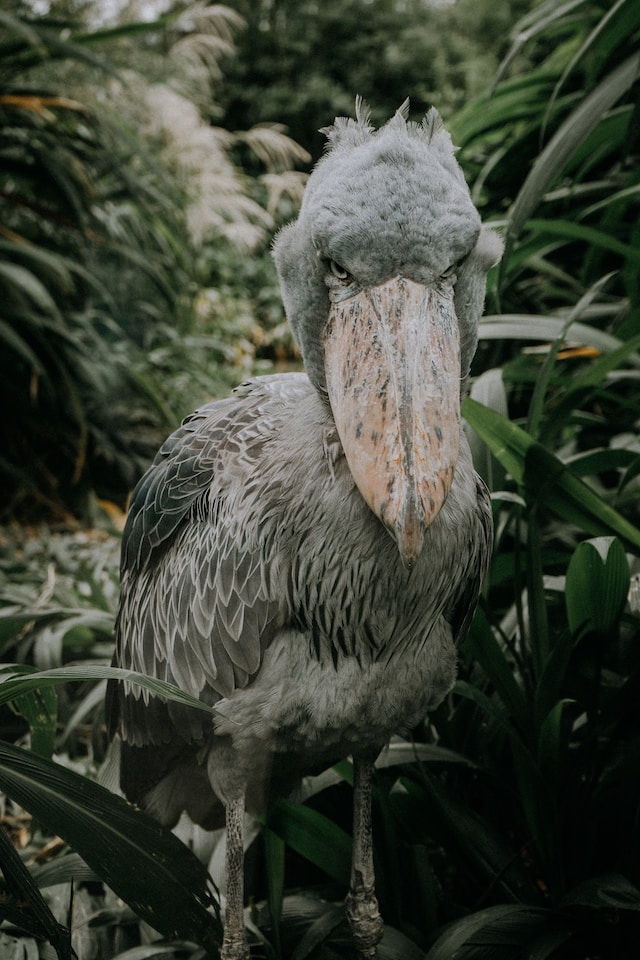
Fascinating Facts About the Shoebill: Africa’s Most Enigmatic Bird
Contents
- 1 The shoebill is the only bird with a beak that resembles the hoof of an ox.
- 2 It uses its formidable bill to eat fish and other aquatic animals.
- 3 Shoebills mate for life.
- 4 They have an unusual courtship ritual.
- 5 In some areas, they’re considered a delicacy.
- 6 They have an average lifespan of 30 years.
- 7 Despite being one of Africa’s most mysterious birds, shoebills deserve our protection
- 8 Conclusion
The shoebill is a large stork-like bird that can be found in the marshes of eastern Africa. It’s also unique among African birds due to its bill, which resembles an ox’s hoof. The shoebill uses this impressive tool to catch fish and other aquatic animals, but it’s not just for fishing—it also serves as a weapon against predators!
The shoebill is the only bird with a beak that resembles the hoof of an ox.
The shoebill’s beak is shaped like a shoe, and it is used to spear fish. It’s also a foot long, which makes it one of the longest bills in the bird world. The unique shape allows the shoebill to scoop up fish and other aquatic animals with ease.
It uses its formidable bill to eat fish and other aquatic animals.
The bird swallows these morsels whole, without chewing or even swallowing first. This makes sense–if you had a mouthful of sharp tools, would you want to chew them?
The shape of its bill makes it easy for shoebills to catch prey underwater by allowing them to spear their food with ease.
Shoebills mate for life.
As you may have noticed, shoebills are very territorial creatures. They mate for life and spend most of their time on their own, but when it comes time to breed, they will seek out each other’s company.
The courtship ritual begins with the male displaying his plumage to attract a mate. If she approves of his display and behavior, she will respond by bowing and strutting toward him while calling out in a unique call called “kuk-kuk-kuk.” The male then bows back at her before flying off together to find an area where they can build their nest (which is actually just a mound of mud).
They have an unusual courtship ritual.
The male and female birds perform an elaborate courtship ritual that begins with the male Shoebill waving his head from side to side. As he does so, he raises his crest and dances around in front of his potential mate. The female also raises her crest and performs a similar dance while they call out to each other. This courtship ritual can last up to 30 minutes!
The female will then lay between two and three eggs at a time in cavities on trees or termite mounds where they incubate for about 40 days before hatching (depending on weather conditions). The chicks are able to walk within hours after they hatch; however they will remain under their parents’ care until they reach maturity at about five months old
In some areas, they’re considered a delicacy.
The meat is said to taste like pork and they’re also hunted for their feathers–which are used in traditional African headdresses.
Shoebills are protected by international treaties and national laws that prohibit the hunting of this endangered species. They’re vulnerable to habitat loss due to rapid deforestation as well as pollution from mining or oil drilling operations.
They have an average lifespan of 30 years.
They have a low reproductive rate, however they can live up to 30 years in captivity and are known to live as long as 50 years in the wild.
Shoebills have a high mortality rate at all stages of their lives due to human activities such as hunting and habitat destruction, which makes it difficult for them to reproduce successfully
Despite being one of Africa’s most mysterious birds, shoebills deserve our protection
The species is threatened by habitat loss and poaching. In some areas, they are hunted for their meat, eggs and feathers–a practice that has caused their numbers to decline significantly over the past few decades.
Despite these threats, shoebills are protected by CITES (Convention on International Trade in Endangered Species of Wild Fauna and Flora).
Conclusion
The shoebill is one of Africa’s most mysterious birds, and its future is uncertain. The species has been declining in numbers for decades due to habitat loss and hunting. If we want these magnificent creatures around for generations to come, we need to protect them now!



Average Rating